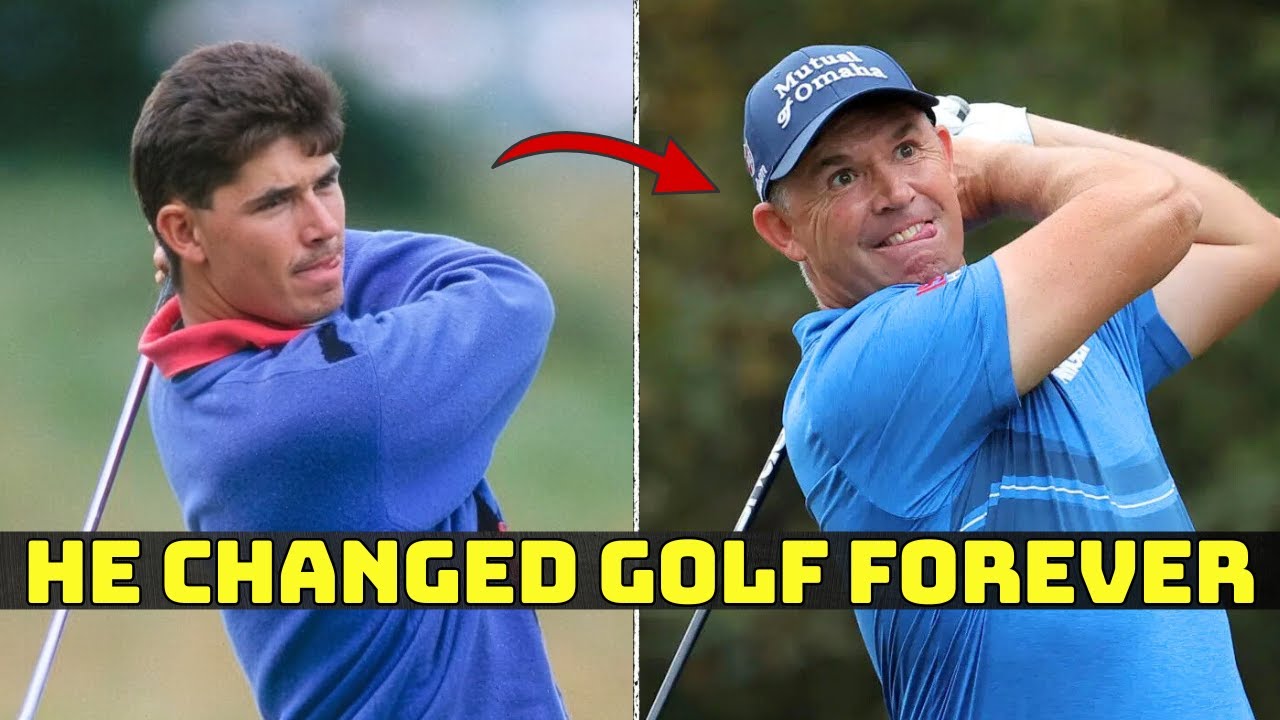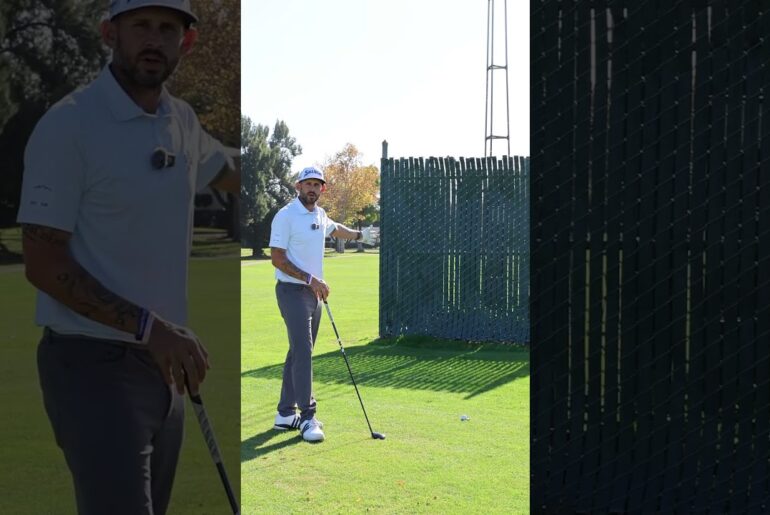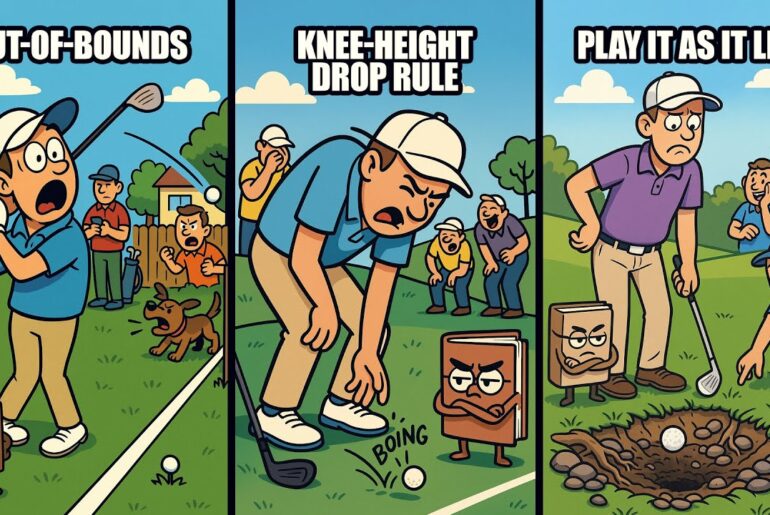This Golfer Forced the Entire World of Golf to Change Its Rules
Pádraig Harrington didn’t rebel against golf — he transformed it. This is the true story of how one man’s honesty and discipline forced the entire world of golf to change its rules. From heartbreak to redemption, Pádraig Harrington proved that integrity can be more powerful than victory. Discover how his quiet conviction reshaped the game forever.
#golfers #golferslife #padraigharrington
Copyright Disclaimers:
Our content is used in adherence to YouTube’s Fair Use guidelines. This may include copyrighted video clips and images used under U.S. Copyright Act Section 107 for commentary, news reporting, educational purposes, and more, without specific authorization from copyright holders.
Abu Dhabi 2011. Morning light shimmerred across the desert course as Padreg Harrington lined up another simple par. For hours he had been in control, calm as always, guided by the precision that defined his entire career. Then came a moment no one on the ground even noticed. When he placed his marker and lifted his ball, a camera caught what the human eye could not. The ball moved just the width of three dimples. It was microscopic, invisible. And yet, according to the rules of the game, it was enough to demand a penalty. Later that evening, when he signed his scorecard without adding the unseen penalty stroke, the officials had no choice. The video evidence was clear. The scorecard was wrong. Harrington was disqualified from the tournament he had led. News spread across the world of golf. Commentators debated technology, fairness, and whether machines now ruled the game. Harrington did not argue, did not defend himself. He stood before reporters, his voice steady, and said only four words that would echo for years to come. Rules are rules. No anger, no excuses, only conviction. But that quiet acceptance carried the weight of change. In that single moment, golf confronted its own contradiction. A sport built on honesty. undone by its pursuit of perfection. What happened that day would not just end one man’s round. It would force the entire world of golf to rewrite the rule book itself. Before that controversy, Padrick Harrington was already one of the most respected figures in golf. Born in Dublin, the youngest of five children, he grew up in a family defined by discipline and quiet determination. His father was a police officer and a gifted Gaelic footballer and his son inherited both the work ethic and the competitive fire. Harrington studied accounting before turning professional, a background that made him analytical to the core. Every decision on the course felt measured, deliberate, and honest. By the time he arrived in Abu Dhabi, he had already won three major championships, the Open twice in the PGA Championship once, and had earned a reputation as one of golf’s true craftsmen. He was known for precision, fairness, and a relentless commitment to improvement. No one imagined that such a man devoted to following every rule would one day be the reason the rule book itself had to change. In the hours after his disqualification, the story spread beyond the tournament. Commentators argued on television. Players whispered in locker rooms. And fans took sides across the world. Many had not even seen the movement on the replay. They watched again and again, slowing it down, searching for proof that the ball had truly shifted. It was there, yes, but only in the unforgiving detail of highdefinition film. What began as a technical ruling quickly became something larger. A test of what fairness meant in a sport built on trust. For more than a century, golfers had called penalties on themselves. The integrity of the game rested not on cameras, but on conscience. Now machines saw what men could not. If technology could decide a match, what room was left for judgment, context, or intent? Harrington stood in the center of that storm. He had done nothing dishonest, yet his name was tied to a controversy he never sought. Some called him unlucky, others a victim of progress. But he refused to resent the system. His acceptance made the injustice even more striking. Golf was changing and it was doing so through the quiet endurance of one of its most disciplined players. That week in Abu Dhabi, the line between human and machine blurred. The rule book, once sacred, suddenly looked outdated. And in the middle of it all was a man who followed every rule so faithfully that the game itself would soon be forced to follow him. In the months that followed, the debate refused to fade. Players and officials questioned how a man could be punished for something that no one, not even his competitors, had seen. Harrington never protested. Yet, his case became impossible to ignore. What had happened in Abu Dhabi was not a scandal of cheating. It was a lesson in how golf’s devotion to precision had outgrown its own humanity. The governing bodies of the sport, the Royal and Ancient Golf Club and the United States Golf Association began a quiet review. They studied frame by frame the incident that had ended Harrington’s tournament. The conclusion was clear. If technology exposed a movement invisible to the naked eye, then the law no longer served fairness. By the next season, the rule had changed. A player would not be penalized for a microscopic movement unseen by anyone on the course. What began as one man’s disqualification had become a catalyst for reform. When Harrington returned to competition, there was no bitterness in his tone, only resolve. He said he hoped the rule would help others avoid the same fate. His humility transformed frustration into progress. The sport that had once punished him now honored his integrity through change. It was not a trophy, but something greater. Proof that one man’s honesty could realign the very system meant to uphold it. Harrington had not rebelled against golf. He had reminded it of its conscience. Long before the cameras and replays, Padrick Harrington had already learned how unforgiving golf could be. It was the year 2000 at the Benson and Hedges International Open. He was leading by five strokes and on the edge of victory when a small oversight changed everything. After finishing his round, he forgot to sign his scorecard. Under the rules, that single missed signature meant automatic disqualification. The shock was immediate. He had played the best golf of his life, and in one quiet moment at the scorer’s table, it was all erased. Reporters waited for outrage, but Harrington offered none. “It was my mistake,” he said simply. There was no anger, only a lesson. That day revealed something essential about him. Most players would rage against such cruelty. He turned it into discipline. From then on, he checked every detail twice, sometimes three times, determined never to repeat the same error. The heartbreak did not harden him. It shaped him. The man who would one day change the rule book began as the young golfer who refused to break his own code, even when the rules broke him. Patrick Harrington was never content to rely on talent alone. Before turning professional, he studied accounting, a discipline that rewarded precision and punished carelessness. Numbers taught him that small margins decided everything. On the golf course, he applied that same logic. Every swing was a calculation, every decision an equation balancing risk and reward. His clubs were instruments, not weapons, and his rhythm came from reason rather than instinct. This devotion to detail became his signature. Catty’s joked that he could spend 10 minutes analyzing a 10-ft putt. Coaches admired his curiosity, though some feared it might one day consume him. To Harrington, the pursuit of perfection was not vanity. It was responsibility. He believed that respect for the game meant mastering every variable within his control. Yet, perfection is a paradox. The closer one comes to it, the more fragile it becomes. Harrington’s mind, built for analysis, made him brilliant in chaos, but restless and calm. Even in victory, he studied what could have been done better. The habits that made him a champion also kept him perpetually unsatisfied. A man chasing a standard that existed only in his imagination. The Open Championship at Carni in 2007 became the defining test of Padre Harrington’s resilience. On the final hole, carrying the weight of his nation’s hopes, he watched his ball splash into the Barry Burn, not once, but twice. Most players would have surrendered to panic. He paused, breathed, and began again. With water behind him and the world watching, he steadied his hands and finished the round with remarkable composure. Minutes later, he entered a playoff against Sergio Garcia. The tension was brutal, the win relentless. Yet Harrington seemed transformed, no longer haunted by failure, but fueled by it. He played with measured aggression, striking the ball cleanly and with conviction. When the final putt dropped, he had won his first major championship, and it ended a drought for Irish golf that had lasted 60 years. That victory was more than a title. It was a portrait of mental strength, the ability to fall twice and still rise in the same hour. The man who once lost a tournament to a forgotten signature had now claimed immortality through calm persistence. In that moment, golf met a champion who believed redemption could be earned stroke by stroke. One year after Carnoui, Padrick Harrington arrived at Royal Burkeell to defend his open title. The course was battered by unrelenting win, the kind that bent flag sticks and punished even perfect shots. Worse, he had injured his wrist in practice days before the championship. Doctors warned him that every swing would hurt. He chose to play anyway. Through the storm, he relied on calculation rather than force. He shaped his shots low against the gusts, trusting feel over fear. On Sunday afternoon, leading by a single stroke, he stood on the 17th TE facing a narrow fairway and a brutal headwind. Instead of playing safe, he reached for a fivewood and launched a shot that cut through the wind and stopped within feet of the hole. It was fearless, the strike of a man unwilling to protect what he had not yet earned. That swing sealed his second open title and confirmed his place among golf’s elite. He soon added the PGA championship, completing a trio of majors in just over a year. Yet even then, Harrington spoke not of dominance, but of discipline. For him, victory was never about power. It was about mastering the storm within. After the triumphs of 2008, Patrick Harrington stood among the finest players in modern golf. Yet success for him was never a destination. It was another puzzle to be solved. While others celebrated, he returned to the practice range. Determined to rebuild the swing that had just won him three majors. He believed perfection was always one adjustment away. But golf does not reward endless tinkering. It punishes it. In the seasons that followed, his ranking fell. Each week brought a new experiment, a slightly different motion, a marginally altered grip. What had once been instinct became calculation, and the rhythm that made him great began to dissolve under the weight of analysis. Commentators called him the mad scientist of golf, a man too curious for his own good. Harrington never denied it. I am addicted to improvement, he admitted. It was not arrogance but compulsion, a refusal to stand still. He saw golf as an equation with infinite answers, and he wanted to solve them all. Yet behind the intellect was quiet frustration. The game he loved was slipping from his control, not through neglect, but through obsession. And still he kept working. Beneath the struggle lay the same integrity that had guided him since that forgotten scorecard years before. Even when brilliance turned against him, he chose persistence over despair. His failures were not the collapse of a genius, but the consequence of caring too much. Time, experience, and humility eventually transformed Patrick Harrington from a restless perfectionist into one of golf’s most generous teachers. He began sharing the lessons that once tormented him, turning years of trial and analysis into guidance for others. His calm explanations and practical drills earned him a new following far beyond the professional circuit. Even as he entered his 50s, Harrington refused to fade into nostalgia. He chased speed, studied biomechanics, and proved that learning never ends. In 2022, he captured the United States Senior Open and led the Champions Tour in driving distance, sending the ball farther than many players half his age. What once seemed an obsession with technique had become mastery of purpose. He no longer chased perfection for himself, but pursued understanding for others. His voice, once filled with self-critique, now carried encouragement. The same mind that had once rebuilt his swing a 100 times now built confidence in others, one conversation at a time. Harrington’s rebirth was not measured in trophies or rankings, but in wisdom shared freely. A life lesson disguised as golf instruction. Beyond championships, Padrick Harrington carried a deeper mission shaped by loss and gratitude. In 2005, his father passed away from esophageal cancer, leaving behind lessons of courage and humility. From that moment, Harrington devoted himself to raising awareness for early detection and treatment, becoming a public advocate and supporter of medical charities. He also lent his time to the Special Olympics and mentored young Irish golfers, often reminding them that discipline matters more than talent. Those who trained with him spoke of his patience, his insistence on integrity, and his quiet humor that softened even the hardest practice days. For Harrington, giving back was not an obligation, but an extension of his love for the game. Golf had given him everything. Victory, failure, purpose, and through service, he repaid it. His legacy reached far beyond fairways. It touched lives, proving that greatness endures only when it lifts others. In 2024, Pedreg Harrington stood before the World Golf Hall of Fame. His son introduced him with a playful smile, saying that punctuality was the only rule his father had ever broken. Laughter filled the room, but the irony was profound. For decades, Harrington had lived by the rule book. Sometimes to his glory, sometimes to his pain. And yet his journey had proven that even the most rigid systems can evolve when met with honesty. As he accepted the honor, he did not speak of trophies or victories. He spoke of people, of how golf mirrors life in its constant demand for humility. The rules, he said, are what keep the game fair. But it’s our respect for each other that keeps it human. The audience rose to its feet, not for his titles, but for the integrity that had defined him. Harrington’s story is not about rebellion or defiance. It is about endurance. The quiet strength of a man who followed every rule until the rules themselves began to follow him. He never set out to change golf, but by living truthfully within its boundaries, he made it fair for everyone who came after. He left the stage smiling, humble as ever, his words lingering like a lesson. Rules are rules, he once said. But because of him, they are now better rules. If you enjoyed this story, don’t forget to subscribe and check out other similar videos on the channel. Your support means a lot to our team. Thank you.







